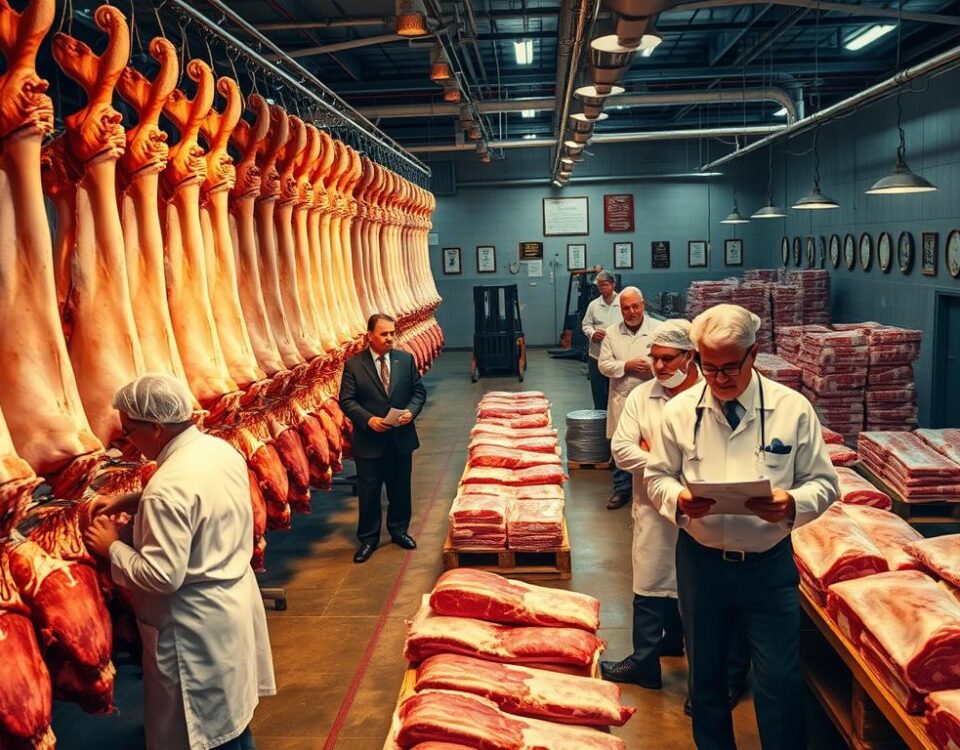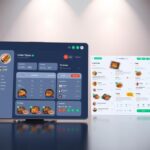
Toast vs Square vs ChowNow: Online Ordering System Comparison
October 15, 2025
Restaurant Depot vs WebstaurantStore: Which One Offers Better Value?
October 16, 2025As a restaurant owner, I’ve seen firsthand how an online ordering system can boost sales and enhance customer satisfaction. However, with so many online ordering platforms available, it can be overwhelming to choose the right one. Did you know that third-party food delivery apps like Uber Eats and Grubhub can charge commissions as high as 30%, significantly eating into your profit margins?
To make an informed decision, it’s crucial to evaluate different ordering systems based on their features and fee structures. By doing so, you can avoid hidden fees and maximize your restaurant’s profitability. So, how can you navigate the complex world of online ordering platforms and make the best choice for your business?
Key Takeaways
- Understand the different types of online ordering systems available
- Evaluate the features and fee structures of various platforms
- Identify potential hidden fees that can impact your profit margins
- Compare the top online ordering platforms in the market
- Negotiate better terms with platform providers to maximize value
The Growing Importance of Online Ordering for Restaurants
The rise of online ordering has transformed the way restaurants operate, making it crucial for businesses to adapt to this new landscape. As the restaurant industry continues to evolve, the significance of having a robust online ordering system cannot be overstated.
Current Market Statistics
The statistics underscore the growing importance of online ordering for restaurants. Restaurants offering delivery options see a significant increase in sales, with some experiencing a boost of up to 93%. Moreover, our latest data indicates that 87% of guests are more likely to reorder from restaurants that provide a great online experience. These numbers highlight the potential for restaurants to not only attract new customers but also to retain existing ones through effective online ordering systems.
Impact on Restaurant Revenue
Implementing an online ordering system can have a direct and positive impact on a restaurant’s bottom line. This is achieved through several key channels: increased order volume, higher average ticket sizes, and capturing additional sales during off-peak hours. By expanding their customer reach beyond the physical location, restaurants can tap into new revenue streams. Furthermore, a seamless online ordering experience improves customer retention and encourages repeat business, which is crucial for sustained revenue growth. Strategic menu engineering for online ordering platforms can also maximize revenue potential.
- Increased order volume through user-friendly online interfaces
- Higher average ticket sizes due to strategic menu suggestions
- Capturing sales during off-peak hours with targeted promotions
- Improved customer retention through seamless online experiences
- Maximizing revenue through strategic menu engineering
Understanding the True Cost of Online Ordering Platforms
Navigating the costs associated with online ordering platforms is essential for maximizing restaurant profits. As I explore the intricacies of these platforms, it becomes clear that the true cost goes beyond the initial pricing.
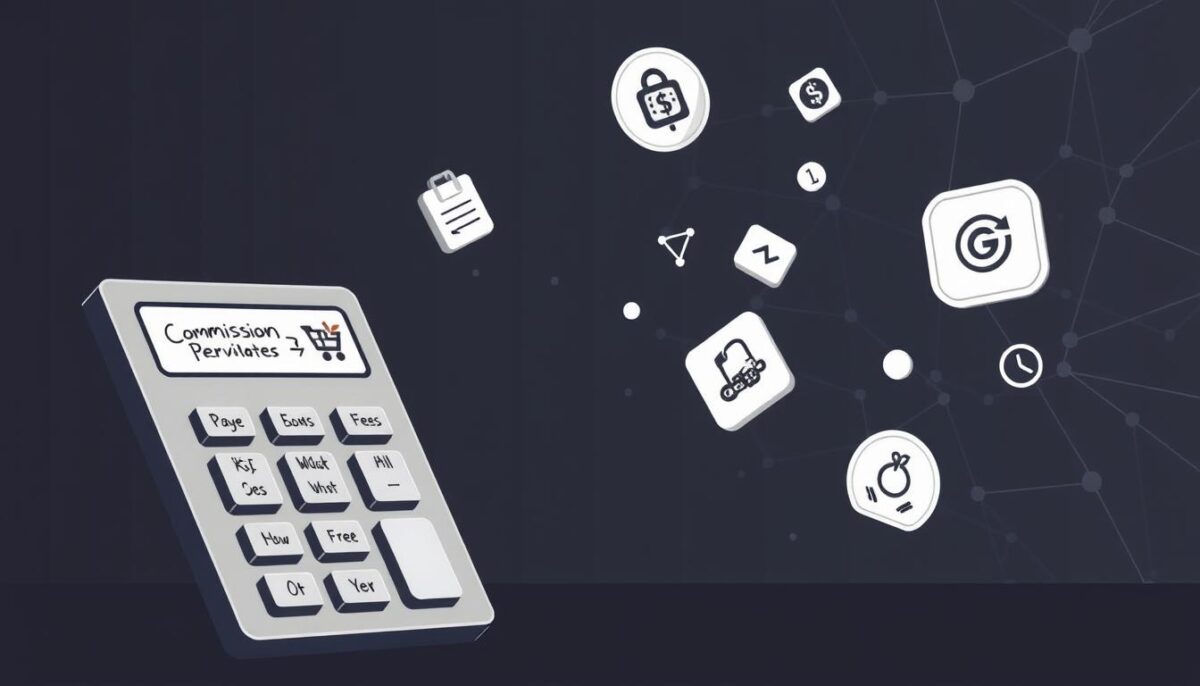
Common Fee Structures Explained
Online ordering platforms typically employ various fee structures that can significantly impact a restaurant’s bottom line. For instance, some platforms charge a monthly fee, while others take a commission on each order. I’ve seen cases where customers are charged $1.75 per order, with the restaurant also responsible for a 2.75% + $0.30 processing charge for online payments. Additionally, opting for premium services can incur extra costs, such as a 12.5% service fee for food delivery add-ons.
| Fee Type | Description | Example Cost |
|---|---|---|
| Monthly Fee | Fixed monthly charge for using the platform | $100/month |
| Commission per Order | Percentage or fixed amount taken from each order | 15% of order total |
| Processing Charge | Fee for handling online payments | 2.75% + $0.30 per transaction |
Hidden Fees to Watch Out For
Beyond the obvious fees, there are several hidden costs that restaurants should be aware of when using online ordering platforms. These include marketing fees, premium placement fees, and charges for menu updates or customer data access. I’ve found that some platforms also have escalating fees that start low but increase after promotional periods or as order volume grows. To avoid unexpected costs, it’s crucial to carefully review the contract and ask about any potential additional fees before signing up.
- Marketing Fees: Charges for promotional activities on the platform.
- Premium Placement Fees: Costs associated with prioritizing your restaurant’s visibility.
- Menu Update Fees: Charges for updating menu items or prices.
By understanding the true cost of online ordering platforms, including both common and hidden fees, restaurants can make more informed decisions about their online presence and maximize their profits.
Key Features to Compare When Evaluating Online Ordering Platforms
When evaluating online ordering platforms, it’s crucial to compare key features that can impact your restaurant’s efficiency and profitability. A comprehensive comparison will help you identify the best platform for your business needs.
Essential Platform Capabilities
Essential features are those that directly impact the functionality and usability of the online ordering system. These include:
- Customizable themes to match your restaurant’s branding
- Integration with existing POS systems for seamless operations
- The ability to manage orders from multiple locations
- Options for pickup, delivery, and curbside pickup to cater to different customer preferences
These essential features form the backbone of a robust online ordering platform. By ensuring that a platform offers these capabilities, you can provide a smooth and consistent experience for your customers.
https://www.youtube.com/watch?v=M48B4UQVKgU
Nice-to-Have Features That Add Value
Beyond the essentials, there are several nice-to-have features that can significantly enhance your online ordering operation. These include:
- Automated marketing tools to gather customer data and run targeted campaigns
- Customer relationship management (CRM) features to build a database of customer preferences and ordering habits
- Advanced analytics and reporting tools to gain insights into your online ordering performance
- Integration with third-party delivery services to expand your reach
| Feature | Benefit | Impact |
|---|---|---|
| Automated Marketing | Increased customer retention | Higher repeat business |
| CRM Features | Personalized customer experience | Improved customer satisfaction |
| Advanced Analytics | Data-driven decision making | Optimized online ordering strategy |
By considering both essential and nice-to-have features, you can make an informed decision when choosing an online ordering platform that meets your restaurant’s needs and enhances your customers’ experience.
How to Compare Online Ordering Platforms Effectively
To make an informed decision, you need to compare online ordering platforms based on your restaurant’s specific needs. This involves a thorough evaluation of various factors that can impact your business.
Creating a Requirements Checklist
Start by creating a comprehensive checklist of your restaurant’s requirements. This should include essential features such as integration with your existing POS system, ease of use for both staff and customers, and the ability to customize the ordering process to fit your brand.
Consider the following key elements when creating your checklist:
- Essential platform capabilities that directly impact customer experience and operational efficiency.
- Nice-to-have features that can enhance your service, such as advanced analytics or marketing tools.
- Technical compatibility with your current systems, including kitchen display systems and accounting software.
| Feature | Importance | Platform A | Platform B |
|---|---|---|---|
| POS Integration | High | Yes | No |
| Customization | Medium | Yes | Yes |
| Advanced Analytics | Low | No | Yes |
Evaluating Platform Compatibility with Your Business
Once you have your checklist, evaluate each platform against your requirements. Consider how well each platform aligns with your restaurant’s brand identity and customer experience goals. It’s also crucial to assess the technical compatibility of the platform with your existing systems.
For instance, if your restaurant is planning to expand or grow, you need a platform that can scale with your business. Similarly, the pricing model of the platform should align with your business volume and financial goals.
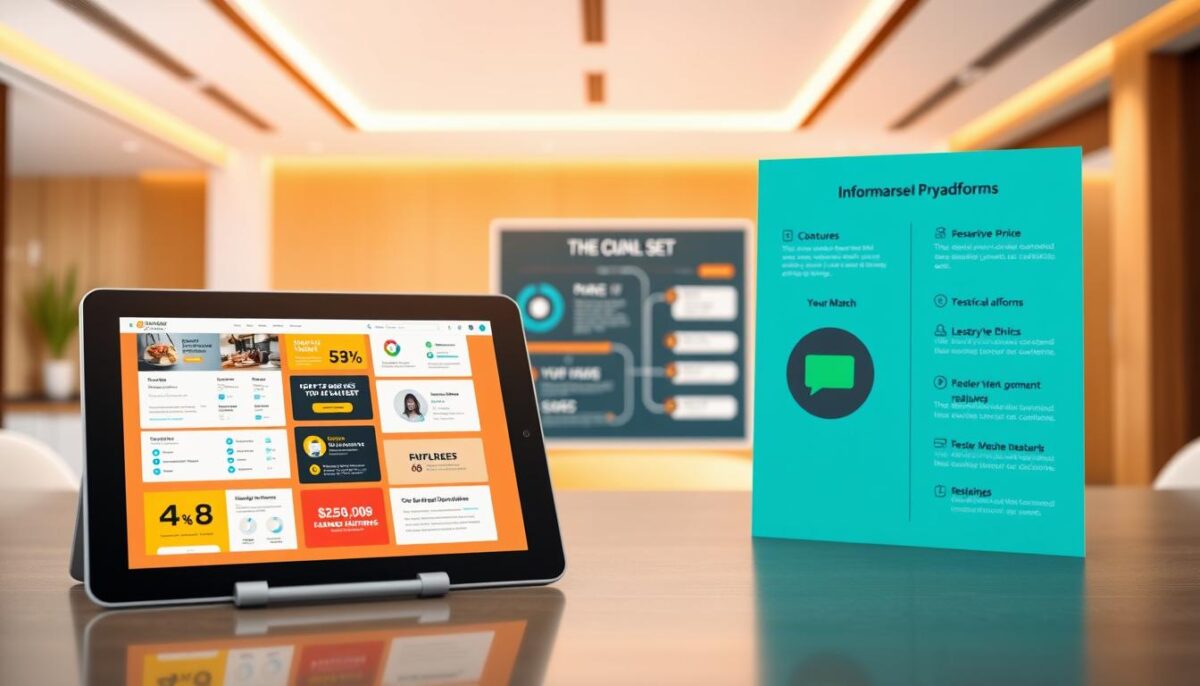
Owner.com: Sales-Focused Direct Ordering Solution

Owner.com is revolutionizing the way restaurants approach online ordering with its sales-focused direct ordering solution. This platform is designed to help restaurants increase direct orders and boost sales through strategic features.
Overview
Owner.com’s online ordering system is equipped with features like item suggestions and pre-checkout recommendations, helping to increase average order sizes. The platform also includes a sales-focused website builder that attracts new customers through Google and enhances online ordering capabilities.
Pros
Key Benefits: Owner.com’s platform offers a branded mobile app that turns new customers into regulars with loyalty points and special offers. The automated marketing tools help restaurants stay connected with customers through personalized campaigns.
Cons
While Owner.com offers a robust set of features, it’s essential for restaurants to evaluate the platform’s compatibility with their specific needs and consider any potential costs associated with the advanced features.
Key Features
Notable Features: The platform’s customer data collection and analytics provide valuable insights for menu optimization and targeted marketing. With features like online ordering and automated marketing, Owner.com helps restaurants create a seamless customer experience.
By leveraging Owner.com’s sales-focused direct ordering solution, restaurants can enhance their online presence, drive sales, and build customer loyalty. The platform’s comprehensive features make it an attractive option for restaurants looking to optimize their online ordering capabilities.
Toast: Integrated POS and Online Ordering System
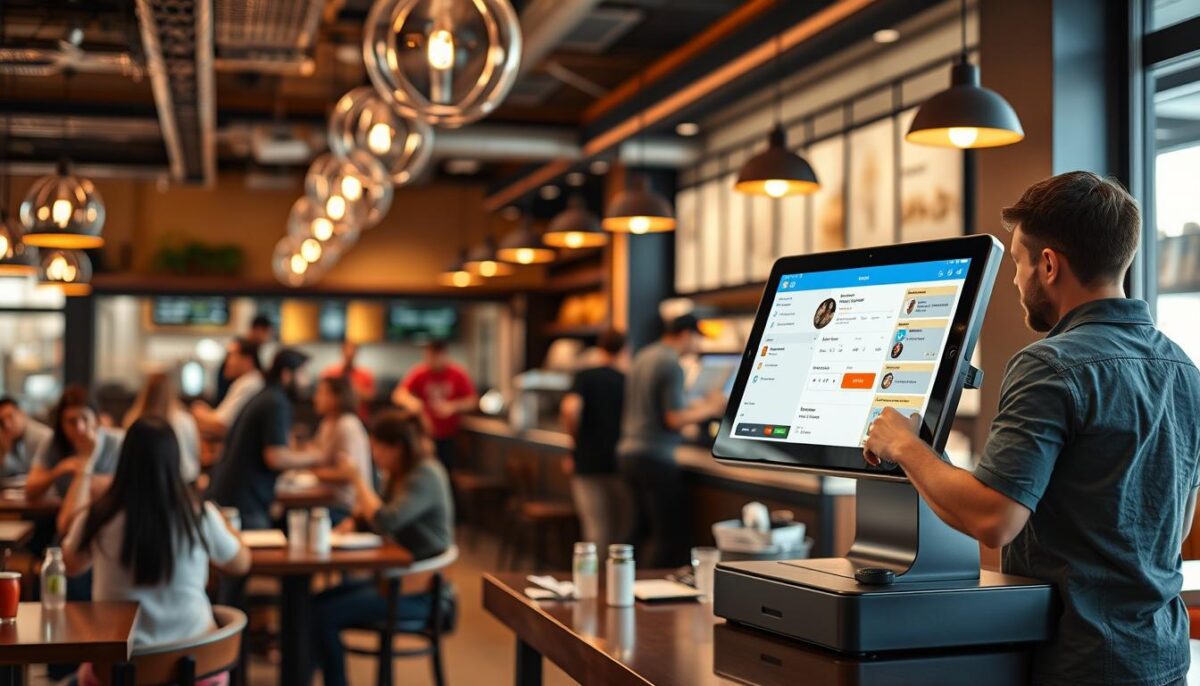
Toast is a comprehensive POS and online ordering system designed to streamline restaurant operations. This integrated solution enables restaurants to manage their in-person and online ordering processes seamlessly.
Overview
Toast’s POS system offers a robust online ordering integration, allowing restaurants to accept orders online, via mobile apps, or through third-party delivery services. With Toast, restaurants can manage tableside ordering and checkout, online ordering, and delivery tracking from a single platform.
Pros
Seamless Integration: Toast’s online ordering system integrates directly with its POS, ensuring that orders are fulfilled efficiently. The platform also offers robust reporting and analytics tools to provide insights into online ordering performance and customer behavior.
Cons
One potential drawback is that access to online ordering requires a subscription to one of Toast’s larger paid plans, which may be a consideration for smaller restaurants or those with limited budgets.
Key Features
Toast’s online ordering system includes several key features, such as:
- Tableside ordering and checkout
- Online ordering and delivery tracking
- Mobile ordering capabilities, including QR code ordering and the Toast TakeOut app
- Integration with kitchen display systems to ensure efficient order fulfillment
By leveraging these features, restaurants can enhance their online ordering processes, improve customer satisfaction, and increase revenue.
BentoBox: Design-Forward Solution for Upscale Restaurants
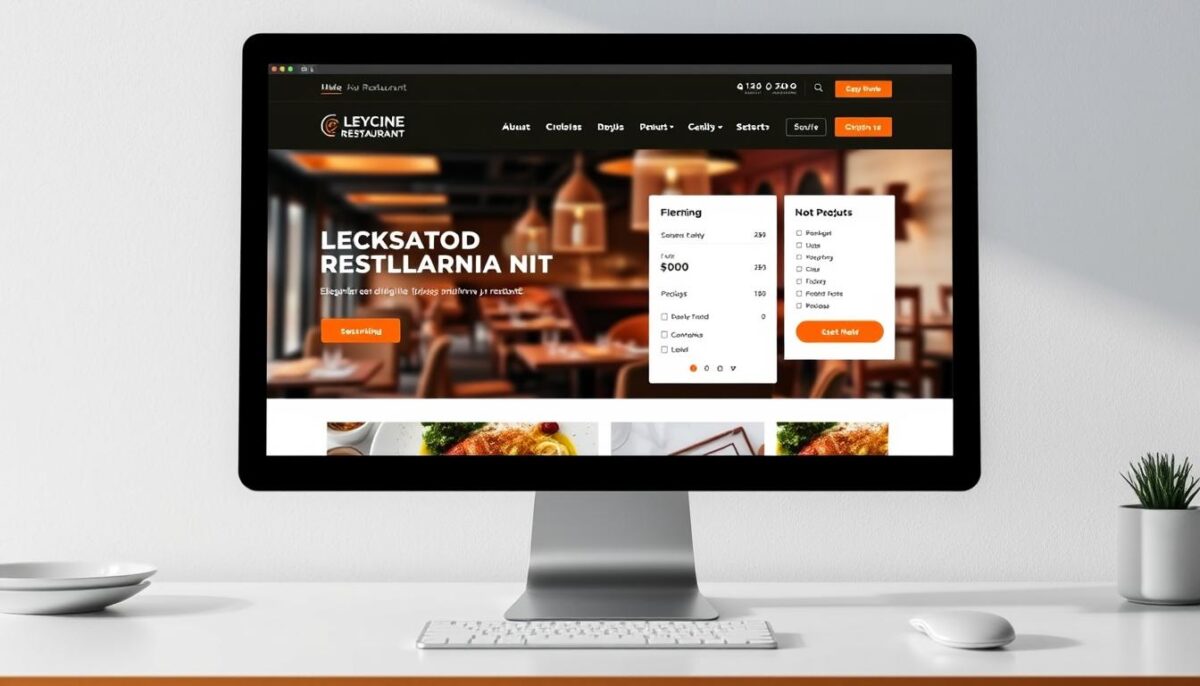
BentoBox is revolutionizing the way upscale restaurants approach online ordering, with a platform that emphasizes design and brand consistency. This design-forward solution is particularly beneficial for high-end establishments looking to maintain their brand’s aesthetic across all customer touchpoints.
Overview
BentoBox offers a comprehensive online ordering platform that integrates seamlessly with a restaurant’s website, ensuring a cohesive brand experience. The platform is designed to extend the restaurant’s brand, offering a consistent look and feel that matches the in-person dining experience.
Pros
The BentoBox platform allows for real-time inventory updates, ensuring that customers are informed about menu item availability. Additionally, it streamlines the checkout process with various payment options and enables restaurants to drive sales through promo codes and loyalty programs.
Cons
While BentoBox offers numerous benefits, its focus on design-forward solutions may require a learning curve for some users, particularly those without prior experience with website management or online ordering systems.
Key Features
BentoBox’s design-focused website builder enables restaurants to create visually stunning online presences. Key features include:
- Online ordering functionality that integrates with the website design
- Real-time inventory management and availability notifications
- Marketing tools, including social media integration and email campaign capabilities
- Event management features for catering and private dining services
By leveraging these features, upscale restaurants can enhance their online presence, improve customer engagement, and ultimately drive sales through a more streamlined and integrated online ordering platform.
Square Online: User-Friendly Option for Square POS Users

Overview
If you’re a Square POS user, you’ll appreciate the convenience of Square Online for managing your restaurant’s online orders. Square Online is a user-friendly online ordering solution that integrates seamlessly with Square POS, providing a consistent and convenient ordering experience for customers.
Pros
One of the key advantages of Square Online is its ability to support multiple order types, including pickup, delivery, and QR code ordering for dine-in customers. This flexibility allows restaurants to cater to different customer preferences, enhancing overall satisfaction.
Social media ordering capabilities enable customers to place orders directly from Instagram, Facebook, and Google, making it easier to attract new customers and encourage repeat business.
Cons
While Square Online offers a range of benefits, it’s essential to consider any potential limitations, such as the need for staff training to maximize the platform’s features.
Key Features
Square Online’s integrated ordering system supports takeout, delivery, and in-house QR orders, ensuring a streamlined experience for customers. The platform also includes loyalty program features that reward repeat customers, promoting regular visits and increasing customer lifetime value.
Additionally, Square’s marketing tools, including email and SMS campaigns, allow restaurants to target customers based on their ordering history, driving new sales and enhancing customer engagement.
The inventory management features help maintain accurate menu availability across online and in-person ordering channels, reducing errors and improving customer satisfaction.
ChowNow: Marketplace-Driven Customer Acquisition Tool

ChowNow is revolutionizing the way restaurants acquire new customers through its innovative marketplace-driven approach. This platform is designed to help restaurants increase their online presence and attract more customers.
Overview
ChowNow offers a comprehensive online ordering solution that includes a marketplace feature, menu integration on high-traffic sites, and smart delivery management. This tool is designed to help restaurants get discovered by new customers and increase sales.
Pros
Key advantages of ChowNow include:
- Increased online visibility through its marketplace feature
- Menu integration on valuable sites like Google and Yelp
- Smart delivery management that optimizes delivery zones and chooses the best delivery provider
Cons
While ChowNow offers many benefits, some restaurants may find that the platform’s features are not tailored to their specific needs. Additionally, the cost of using ChowNow may be a consideration for some businesses.
Key Features
ChowNow’s key features include:
- Marketplace feature that promotes partner restaurants on a local map
- Menu integration on high-traffic sites to increase sales
- Smart delivery management that adjusts for high-traffic times and chooses the highest-rated delivery provider
- Marketing tools, including email campaigns and promotional capabilities
- Customer data collection features that provide valuable insights for personalized marketing and menu optimization
By utilizing ChowNow’s online ordering platform and customer acquisition tool, restaurants can effectively increase their online presence, attract more customers, and drive repeat business.
Menufy: Entry-Level Solution for New Restaurants
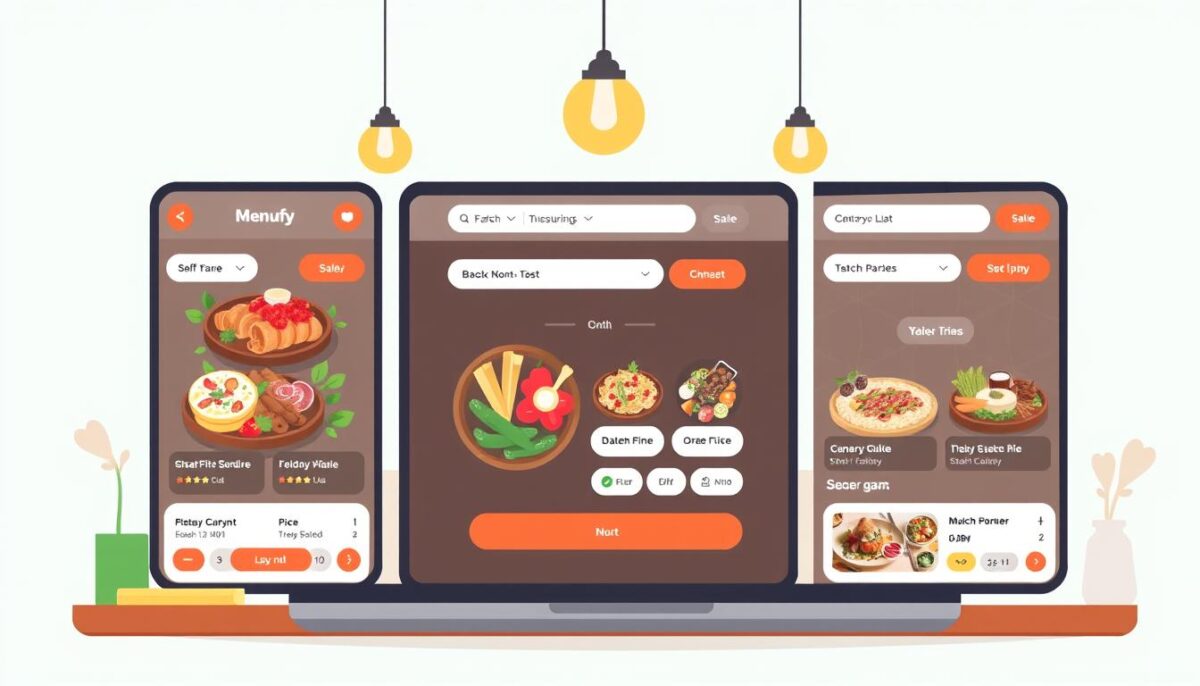
For restaurants just starting out, Menufy offers a simple online ordering solution. Menufy is designed to be user-friendly, making it an ideal choice for new establishments looking to expand their reach through online channels.
Overview
Menufy is an online ordering system that caters to the needs of new restaurants. It provides easy integration with existing websites, reducing setup time. Menufy also offers a custom restaurant website option, although with limited design and functionality.
Pros
Menufy’s key advantages include its easy integration with existing sites and a loyalty program called Tasty Rewards, which encourages repeat business. The platform also offers basic marketing tools, including text and email capabilities.
Cons
One of the drawbacks is that Menufy doesn’t offer a branded mobile ordering app for restaurants. Additionally, the custom website design is simple and limited.
Key Features
Menufy’s key features include its simple website integration, Tasty Rewards loyalty program, and basic marketing tools. The platform also provides order management features to help restaurants track and fulfill online orders efficiently.
By leveraging Menufy’s online ordering system, restaurants can streamline their operations and improve customer engagement. With its user-friendly interface and essential features, Menufy is a viable option for new restaurants looking to establish an online presence.
Third-Party Apps: Uber Eats, DoorDash, and Grubhub Storefronts
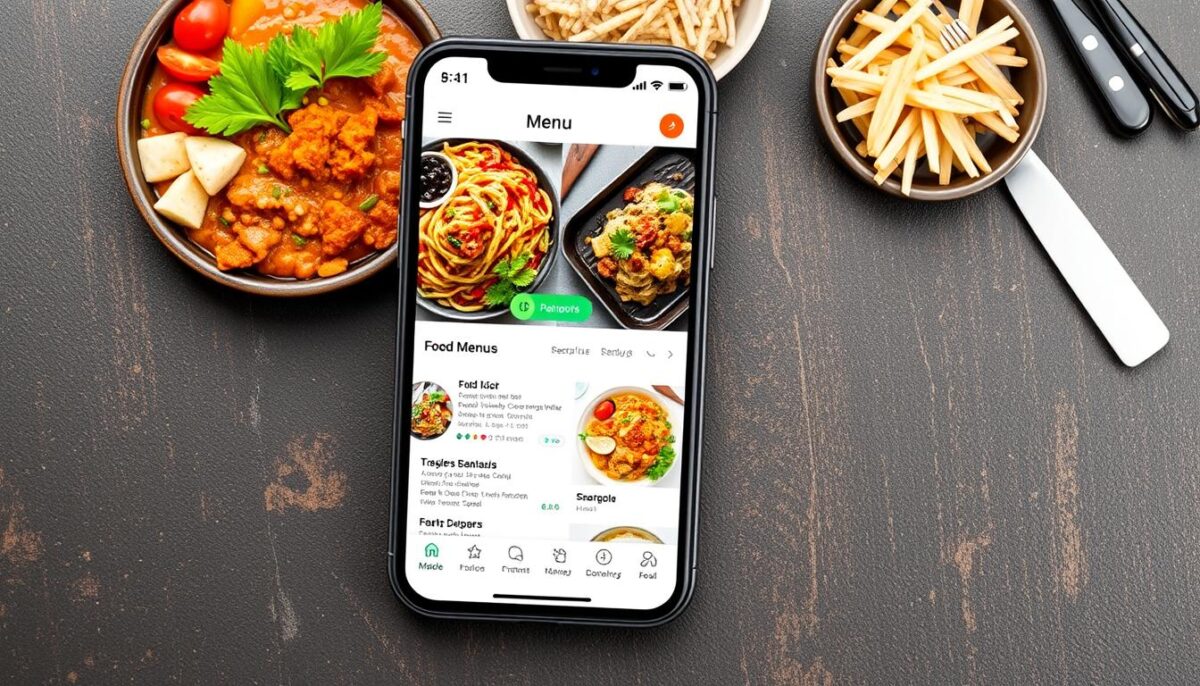
Third-party delivery apps offer restaurants a convenient way to increase their visibility and reach a broader audience. By leveraging platforms like Uber Eats, DoorDash, and Grubhub, restaurants can tap into an existing customer base, boosting their online orders and promoting their brand through custom storefronts.
Overview
These platforms provide a range of benefits, including convenient customer access, a built-in driver network, and 24/7 customer service. With a custom-branded storefront, restaurants can create a personalized ordering experience while still utilizing the delivery infrastructure provided by the apps.
Pros
The advantages of using third-party delivery apps include:
- Access to a large customer base already using these platforms
- No need to hire in-house drivers, as the apps provide their own
- Robust 24/7 customer support through various channels
Cons
While beneficial, there are also considerations to keep in mind, such as commission fees and the potential loss of customer data.
Key Features
Some of the key features of these platforms include:
- Custom-branded storefronts for a personalized ordering experience
- Built-in delivery management systems for efficient operations
- Marketing and discovery features to help restaurants get found by new customers
- 24/7 customer support for assistance at any time
- Reporting and analytics tools to provide insights into app usage and customer behavior, highlighting valuable features
By understanding the pros and cons and leveraging the key features of third-party delivery apps, restaurants can make informed decisions about their online presence and delivery strategy.
Strategies to Negotiate Better Terms and Avoid Unnecessary Fees
The key to successfully partnering with an online ordering platform lies in understanding and negotiating the fine print of your contract. As restaurants increasingly rely on these platforms, being aware of the potential fees and terms is crucial.
Leveraging Competition Between Platforms
To negotiate better terms, it’s essential to leverage the competition between different online ordering platforms. By comparing their offerings and fees, you can identify the best options for your restaurant. For instance, some platforms charge monthly flat-rate fees, while others impose per-order charges or payment processing fees. Understanding these structures allows you to make informed decisions.
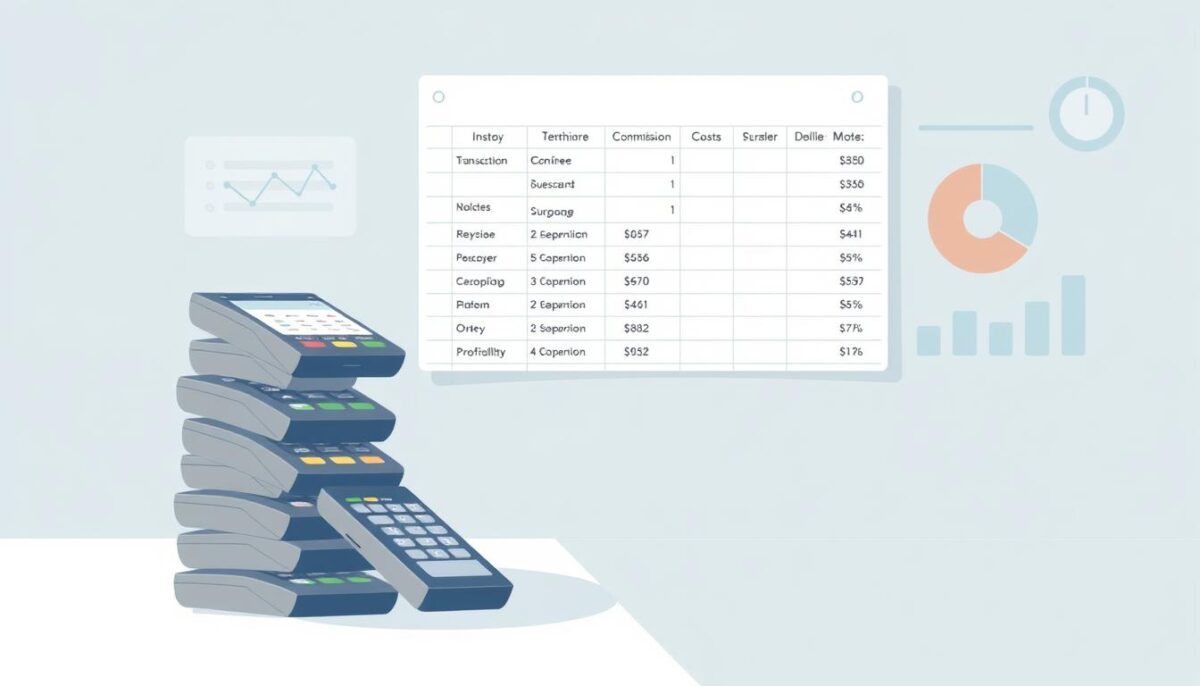
Understanding Contract Terms and Conditions
Carefully reviewing the contract terms and conditions is vital to avoid unnecessary fees. Pay special attention to clauses related to payment processing, data ownership, and service level agreements. Negotiating more favorable termination clauses can provide flexibility if the platform doesn’t meet expectations. Additionally, securing written guarantees regarding fee increases can help predict costs throughout the contract term.
| Fee Type | Description | Negotiation Strategy |
|---|---|---|
| Monthly Flat-Rate Fees | Fixed monthly charges for platform use | Discuss potential discounts for long-term commitments |
| Per-Order Charges | Fees incurred per order processed | Negotiate caps on per-order charges for high-volume restaurants |
| Payment Processing Fees | Charges for processing payments through the platform | Explore alternative payment processing options to reduce fees |
By understanding the fee structures and contract terms, you can negotiate more effectively with online ordering platforms. This proactive approach helps minimize unnecessary costs and ensures a more beneficial partnership for your restaurant.
Conclusion: Choosing the Right Online Ordering Platform for Your Restaurant
With numerous online ordering platforms available, it’s essential to compare features and fees to find the best fit for your restaurant. When selecting an online ordering platform, consider your business needs and goals. For most owners, direct takeout and delivery orders are a must, but many providers also offer impressive features and add-ons to support sales goals and other restaurant needs.
To make an informed decision, prioritize key considerations such as cost structure, feature set, and integration capabilities. Evaluate each platform’s strengths and ideal use cases to identify potential matches for your business. For instance, some platforms excel in providing a seamless ordering experience, while others offer robust system integration.
When choosing an online ordering platform, consider both current needs and future growth to ensure scalability as your online ordering volume increases. It’s also crucial to stay adaptable with your technology choices to maintain a competitive advantage in the evolving landscape of restaurant online ordering.
By carefully evaluating your options and selecting a platform that meets your needs, you can optimize your online ordering system and drive sales growth. Ultimately, the right online ordering platform will help you achieve your business goals and improve customer satisfaction.
FAQ
What are the most important features to consider when evaluating an online ordering system for my restaurant?
When evaluating an online ordering system, consider essential features such as menu management, order customization, and integration with your POS system. Additionally, look for features that enhance customer experience, such as loyalty programs and personalized marketing.
How can I avoid hidden fees when using an online ordering platform?
To avoid hidden fees, carefully review the contract terms and conditions, and ask about any additional fees associated with services like delivery integration or payment processing. Also, consider using a direct ordering solution that eliminates third-party fees.
Can I integrate my online ordering system with my existing POS system?
Many online ordering systems offer integration with popular POS systems, such as Toast or Square. This integration enables seamless order management and reduces errors. Check with your online ordering system provider to see if they support integration with your POS system.
How do online ordering platforms impact my restaurant’s revenue?
Online ordering platforms can increase revenue by making it easier for customers to place orders and by providing opportunities for upselling and cross-selling. Additionally, some platforms offer data and analytics to help you optimize your menu and marketing strategies.
What are the benefits of using a direct ordering solution like Owner.com?
A direct ordering solution like Owner.com allows you to retain customer data and reduce commission fees associated with third-party delivery apps. This can lead to increased customer loyalty and higher profit margins.
How do I choose the right online ordering platform for my restaurant’s specific needs?
To choose the right online ordering platform, consider your restaurant’s unique needs and goals, such as takeout and delivery capabilities, menu complexity, and customer engagement strategies. Create a requirements checklist to evaluate different platforms and find the best fit.

